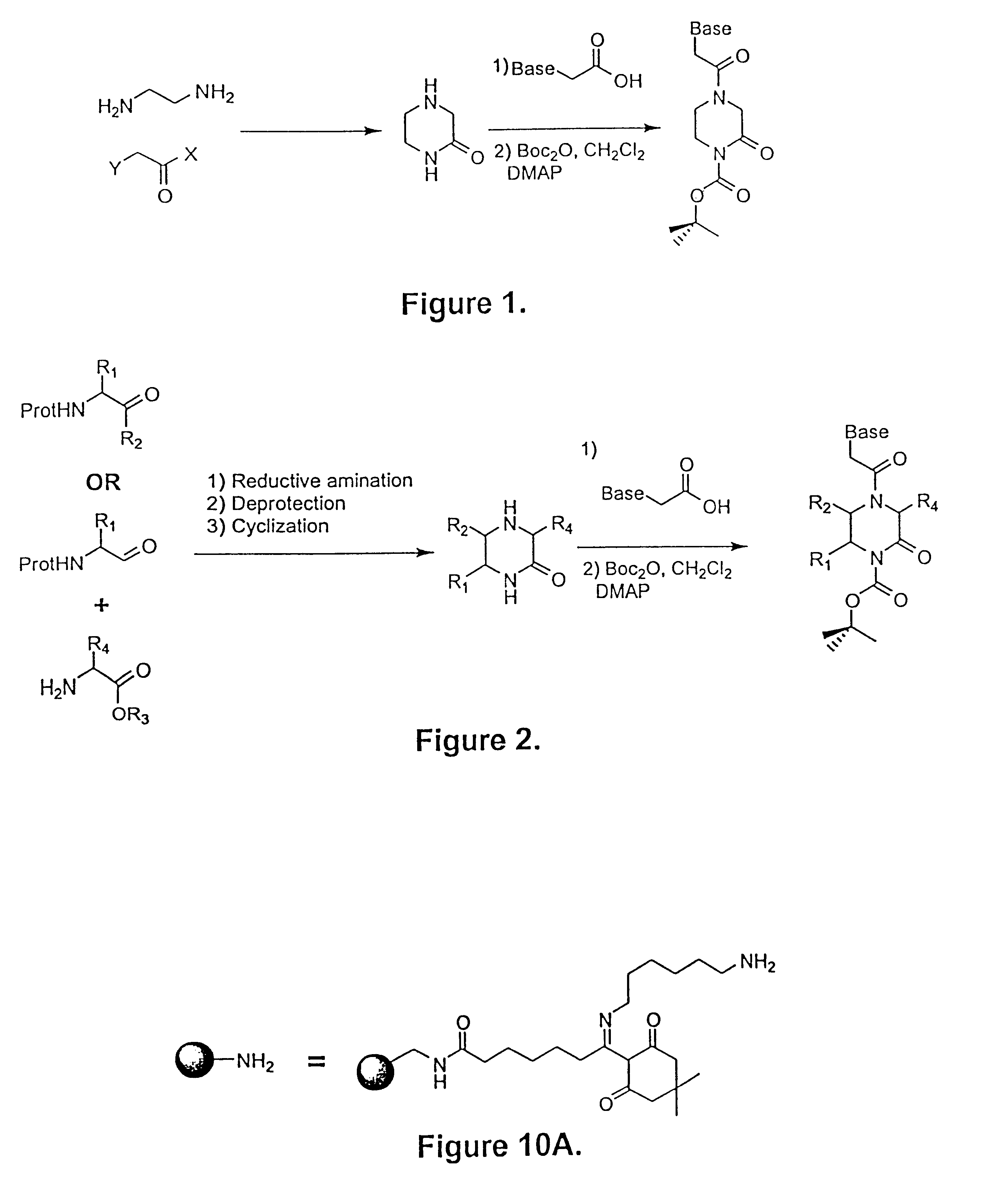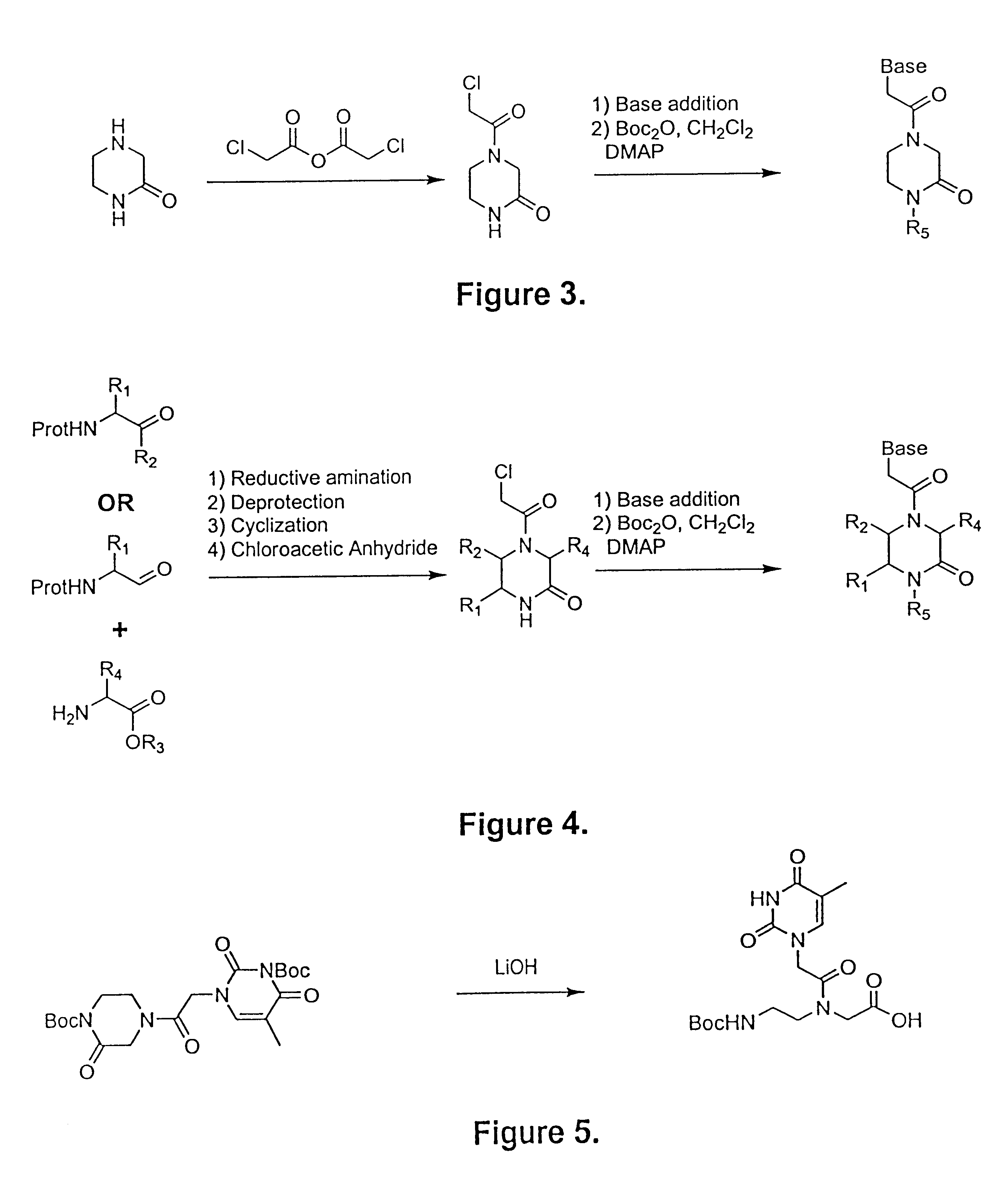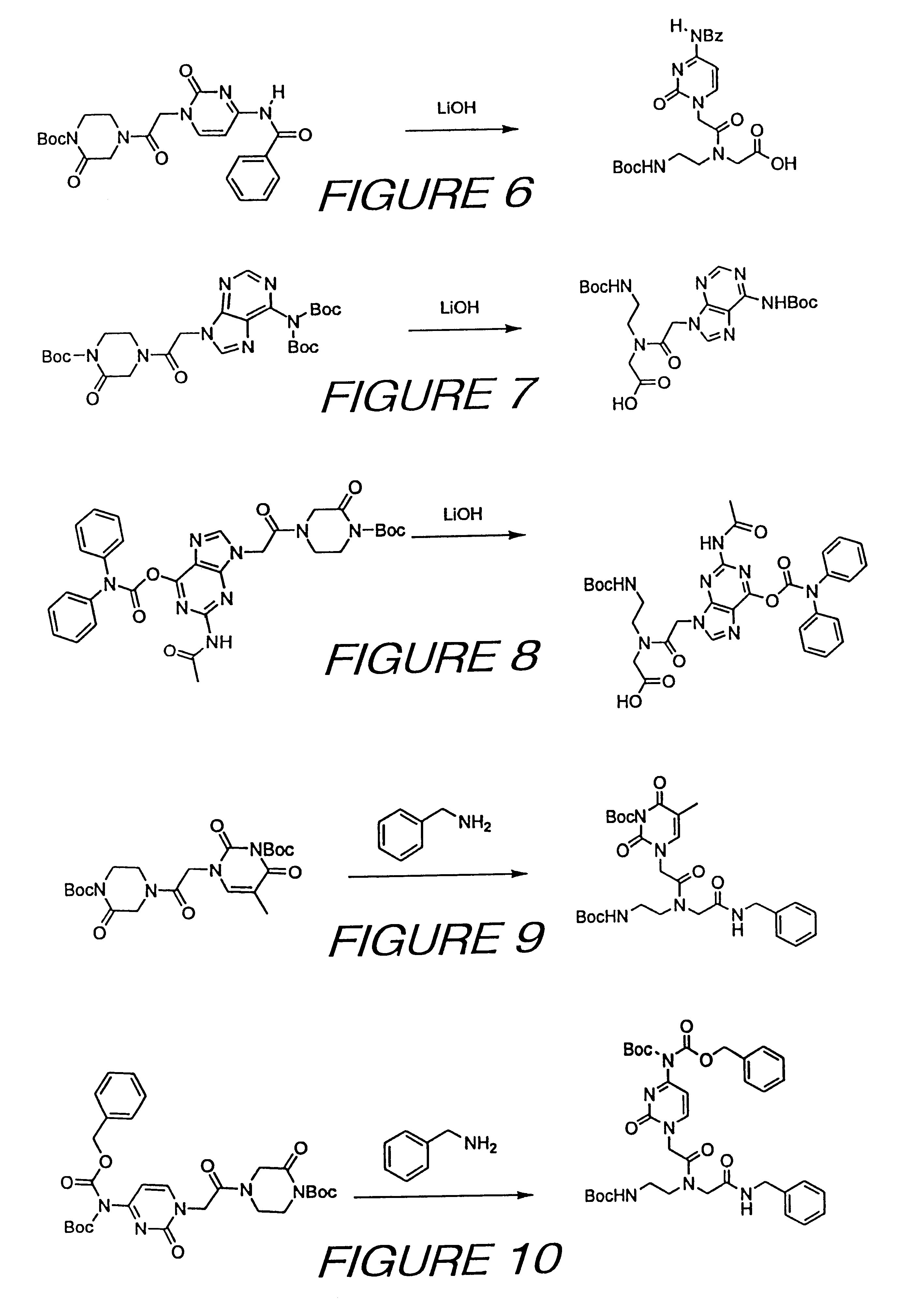Peptide nucleic acid precursors and methods of preparing same
- Summary
- Abstract
- Description
- Claims
- Application Information
AI Technical Summary
Benefits of technology
Problems solved by technology
Method used
Image
Examples
example 2
Chloroacetyl-piperazinone Synthesis
Anhydrous piperazinone (10 mmoles, 1.002 g) was suspended in dry DCM (100 mL) under nitrogen atmosphere and treated with chloroacetic anhydride (11 mmoles, 1.88 g). The reaction mixture was stirred at room temperature for 3 hours and treated with 3 equivalents of tris-amine resin (6 mmol / g, 5 g) to sequester the unreacted chloracetic acid. After stirring an additional 5 minutes, the reaction mixture was filtered, and the resin was washed with DCM (3.times.100 mL). The solvent was removed by rotary evaporation, and the resulting oil was treated with EtOAc. The resulting precipitate was collected by filtration to afford the desired chloroacetyl-piperazinone, as a cream-colored solid in 95% yield (1.68 g).
example 3
N-(Thymin-1-ylacetyl)piperazinone Synthesis Using Method of FIG. 1
A 0.6 M solution of thymine-1-acetic acid (440 mg / 4 mL) in DMF was treated with 1.5 mL of 3.2 M DIC in DMF. The reaction mixture was stirred at room temperature for 2-3 minutes and treated with 1.1 equivalents of piperazinone (263 mg) as prepared in Example 1. Stirring was continued for approximately 48 hours, and the solvent was removed by rotary evaporation. The residue was washed extensively with ethyl acetate to remove the diisopropyl urea, and the white solid mass was collected by filtration. An additional wash with 1:9, methanol:DCM removes any unreacted thymine-1-acetic acid, resulting in an 80% yield of pure unprotected piperazinone intermediate as a white solid.
example 4
N-(Thymin-1-ylacetyl)-piperazinone Synthesis Using Method of FIG. 3
Thymine (630.6 mg, 5 mmol) and K.sub.2 CO.sub.3 (1.38 g, 10 mmol) were combined in a 50 mL round bottom flask and azeotroped with benzene (3.times.10 mL). The mixture was suspended in anhydrous DMF (15 mL) under argon and allowed to stir at room temperature for 4 hours. Solid chloroacetyl piperazinone (1.37 mmol, 1.4 eq) as prepared was added, and the reaction mixture was stirred for an additional 3-4 hours. The crude reaction mixture was filtered, concentrated and precipitated by treatment with EtOAc (30 mL). The solid was washed extensively with EtOAc and dried in a dessicator under vacuum to afford 1.33g of N-(thymin-1-ylacetyl)-piperazinone (100% yield) as a white solid.
PUM
| Property | Measurement | Unit |
|---|---|---|
| Length | aaaaa | aaaaa |
| Covalent bond | aaaaa | aaaaa |
Abstract
Description
Claims
Application Information
 Login to View More
Login to View More - R&D
- Intellectual Property
- Life Sciences
- Materials
- Tech Scout
- Unparalleled Data Quality
- Higher Quality Content
- 60% Fewer Hallucinations
Browse by: Latest US Patents, China's latest patents, Technical Efficacy Thesaurus, Application Domain, Technology Topic, Popular Technical Reports.
© 2025 PatSnap. All rights reserved.Legal|Privacy policy|Modern Slavery Act Transparency Statement|Sitemap|About US| Contact US: help@patsnap.com



